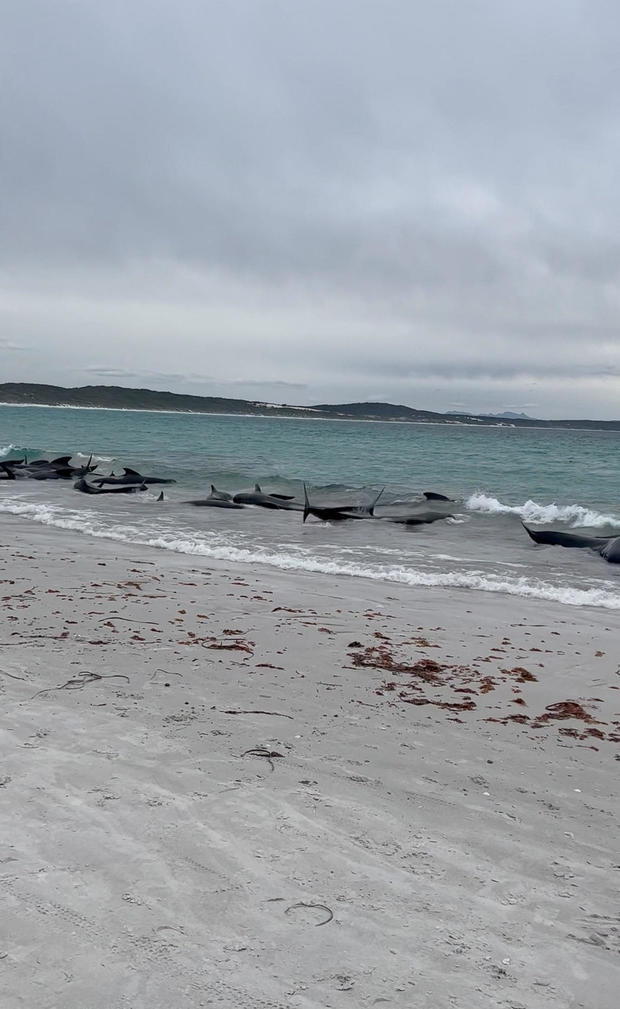Dozens of pilot whales are fighting for their lives on Australian beach after mysteriously washing up onshore
Dozens of pilot whales have become stranded on an Australian beach, hours after a pod was seen huddling together in a tight group not far offshore. According to officials, between 60 and 70 of the animals have been impacted.
The pilot whales, one of the largest dolphin species, appeared at Cheynes Beach on the tip of Western Australia. Officials from Cheynes Beach Caravan Park first started seeing the ordeal on Tuesday morning, when the animals had gathered about 328 feet offshore.
“What’s happening right now,” the park posted on Facebook. “…We don’t know! But look at this pod of whales only 100m off the beach.”
ALLAN MARSH/CHEYNES BEACH CARAVA
At first, the pilot whales were all huddled together, facing inward in a tight circle. They were soon after seen in a tight line, facing the same direction. And after a few hours, the park said they had “stranded themselves.” Videos show dozens of the animals washed up along the beach, many whipping their tails in the low onshore waters in an attempt to free themselves back out to sea.
The park said that Western Australia’s Department of Biodiversity, Conservation and Attractions is on the scene to try and help the whales. The Parks and Wildlife Service of Western Australia said Tuesday afternoon local time that roughly 60 to 70 long-finned pilot whales had been stranded. Officials with the organization say they will remain at the beach overnight to monitor the animals.
“A team of experienced staff are currently being deployed, including Perth Zoo veterinarians and marine fauna experts, along with specialised equipment, including vessels and slings,” the wildlife officials said. “Our team will camp on the beach overnight and are setting up a safety zone around the stranding area. At this time, volunteers and the public are requested to not attend the beach ovaernight for their safety.”
Long-finned pilot whales live in large groups of hundreds of animals that divide themselves into “close-knit pods” of 10 to 20 whales, National Oceanic and Atmospheric Administration says, and it’s not uncommon for them to be huddled together.
“At the surface, these whales will often display various active behaviors such as raising their heads above the surface or lifting their flukes out of the water and splashing them down against the surface,” NOAA says. “They are also regularly seen resting or logging at the surface in a chorus-line or stacked formation and sometimes approach vessels moving at slow speeds.”
The circumstances surrounding this particular stranding remain unclear. It could have been the result of them logging together and getting too close to shore, but in past pilot whale strandings, one of the animals being injured or ill has also played a role.
In June, a pod of 55 long-finned pilot whales became stranded in Scotland. Sarah Dolman, a senior ocean campaigner for the Environmental Investigation Agency, said on Tuesday in that situation, post-mortem examinations showed one of the female pilot whales had difficulty giving birth.
“This may have been what brought the pod ashore,” she said of that incident. “Pilot whales live in incredibly sociable and strongly bonded groups. Often, tragically, when a sick or injured pilot whale comes ashore, the rest of the pod will follow.”
For all the latest Automobiles News Click Here
For the latest news and updates, follow us on Google News.



